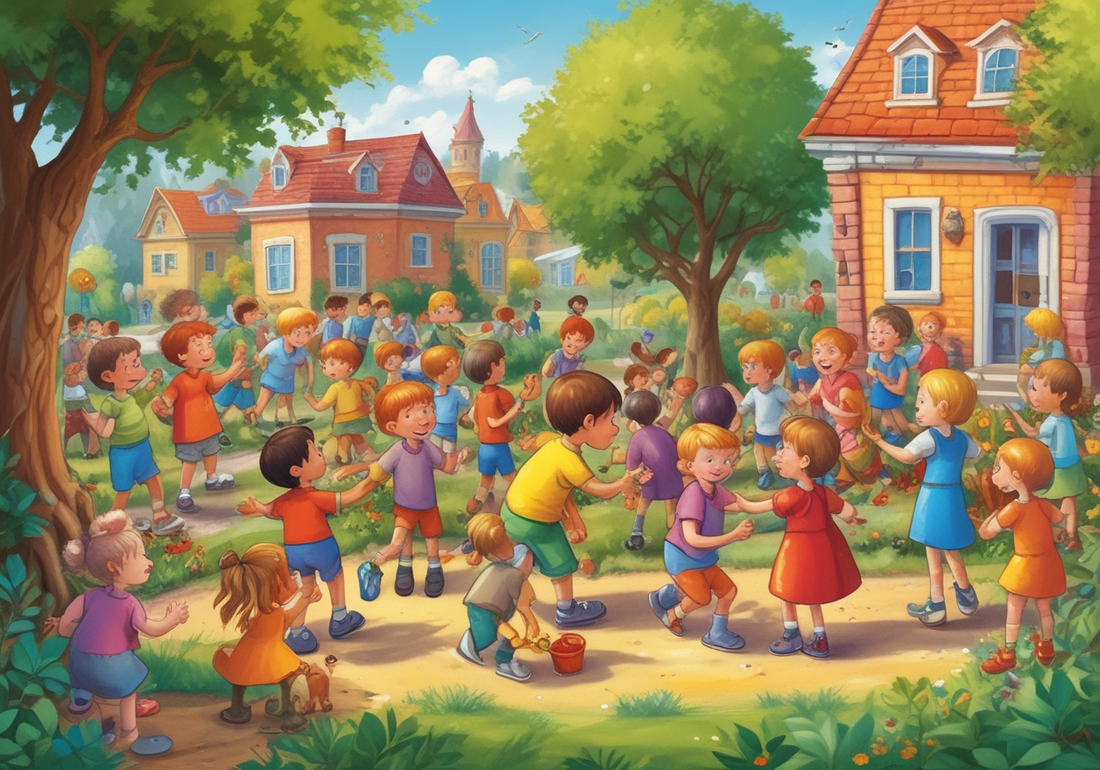Key Highlights
- Kindness is an important value. It means treating others with generosity, empathy, and respect.
- Teaching children empathy is key. It helps them grow socially and emotionally. This growth leads to strong, positive relationships.
- Getting kids involved in activities is a great way to show kindness. Role-playing kindness, crafting projects where they share, and reading stories about kindness can all help.
- When children notice and appreciate acts of kindness every day, they are more likely to practice it themselves.
- Celebrating kindness can strengthen kind behavior. Creating a "Kindness Wall" is an easy way to encourage a positive atmosphere at home or in the classroom.
Introduction
In a world that often focuses on competition and showing off, it is important to teach children about kindness. Many touching stories in The New York Times show how important empathy and compassion are. Teaching kindness to kids is not only about good manners. It is also about helping them care for the well-being of others.
Understanding kindness meaning for kids together
Before starting activities and ideas, it's important to agree on what "kindness" really means. The idea may seem simple, but kids often see the world in a different way than adults do.
Have open and friendly talks with your children about kindness. Discuss how even small acts of kindness can greatly affect others. This can create a rippling wave of positivity.
Defining Kindness in Simple Terms
For young kids, understanding ideas like kindness can be hard. It helps to use simple words and examples they can relate to.
Start by saying kindness means treating others the way you want to be treated. You could also look up the definition of kindness in the English dictionary. Then, break it down into easier words so they can understand it better.
It's important to show that kindness is not just about big acts. Small things, like sharing toys, helping with chores, or saying kind words, can show kindness too.
Stories and Examples of Kindness from Around the World
Children learn best through stories and real-life examples. Sharing inspiring tales of random acts of kindness can spark their imagination. This can also motivate them to be kind themselves.
You can share stories of people helping others or animals showing compassion. Even simple good deeds you see every day matter. Here are a few examples:
- The story of Malala Yousafzai, a brave young girl who fought for education rights.
- The tale of Greta Thunberg, a teenager who inspired many to care about climate change.
It is important to show that kindness can come from anyone, no matter how old they are. These stories show how they made a positive impact on the world.
Activities to Foster Kindness in Children

Integrating fun activities into children's daily routines can help them learn about kindness in an engaging way. These activities turn ideas into real actions and encourage kids to live kindly.
We want to share some simple ways to promote kindness through different activities. From creative role-playing to fun crafting projects, there are so many ways to inspire kids to be kind. Let’s look at a few ideas you can easily add to their everyday lives.
Role-Playing Scenarios to Practice Kindness
One of the best ways to teach kindness is by having young kids try role-playing. This means they can pretend to be someone else. It provides a safe place for them to explore social situations and see how their actions affect other people.
You can create simple scenarios. For example, children can pretend to help a friend who feels left out, comfort a sibling who is upset, or share a favorite toy. You can also show examples of using kind words, respecting elders, or helping those in need.
Ask them how their actions made other people feel. Discuss different ways they could have responded with kindness.
Crafting Projects That Encourage Sharing and Caring
Combining creativity with kindness is a great way to make learning fun. Getting children involved in crafting helps them show their artistic abilities and learn important values about sharing and generosity.
Ask them to make handmade gifts for friends and family, bake treats to share with neighbors, or create cheerful cards to make someone’s day better. These fun activities help kids understand generosity and let them see the happiness they give to others.
Don't forget to stress how putting effort and thought into their work shows they really want to spread kindness.
Celebrating Acts of Kindness
We celebrate things like achievements, birthdays, and holidays. It's also important to take time to notice and appreciate small acts of kindness. This can really benefit children.
When kids are recognized regularly for their kind behavior, it shows them the value of compassion. This encourages them to keep spreading kindness and positivity.
Recognizing Everyday Kindness in Family and Friends
Start by creating a culture of gratitude at home. Encourage your children to notice and appreciate acts of kindness from family members. This could be a sibling helping with chores, a parent making a favorite meal, or a grandparent offering positive words.
Talk about these kind acts during family meals or gatherings. This gives everyone a chance to show their thankfulness. By doing this, you build stronger family ties and show how important everyday kindness is.
Also, help your children see kindness beyond just the family. Teach them to recognize and appreciate kind acts from teachers, friends, or even strangers they meet each day.
Creating a 'Kindness Wall' at Home or School

A "Kindness Wall" serves as a visual reminder of the positive impact of compassion and encourages continuous acts of kindness. This interactive space can be created at home, in the classroom, or even in community centers, allowing individuals to share their stories and inspire others.
To make the wall more engaging, provide colorful paper, markers, and other craft supplies. Encourage children to write down or draw their acts of kindness or those they have witnessed or received.
In a world that needs more kindness, teaching kids about it is a great gift. We can help them understand kindness by using simple words and showing examples from around the globe. Role-playing and fun projects make learning about kindness exciting and real. Celebrating kind actions helps us all feel thankful and open-hearted. Getting kids to notice everyday kindness or creating a 'Kindness Wall' helps build good values. Together, we can raise a new generation that sees the beauty of kindness and knows how it affects the world. Start now and see what good things can follow.
Frequently Asked Questions
How do you explain kindness to a child?
Kindness is when we treat other people the way we want to be treated. It means we try to understand what they feel and show we care. This could be done with our words or actions. We should always be nice, just like we hope for others to be nice to us.
Can kindness be taught, and how?
Yes, for sure! We can teach kindness by being a good example. We can also involve children in activities that encourage sharing and empathy, like role-playing games or board games like kindness counts. It's important to always notice and praise their kind actions.

